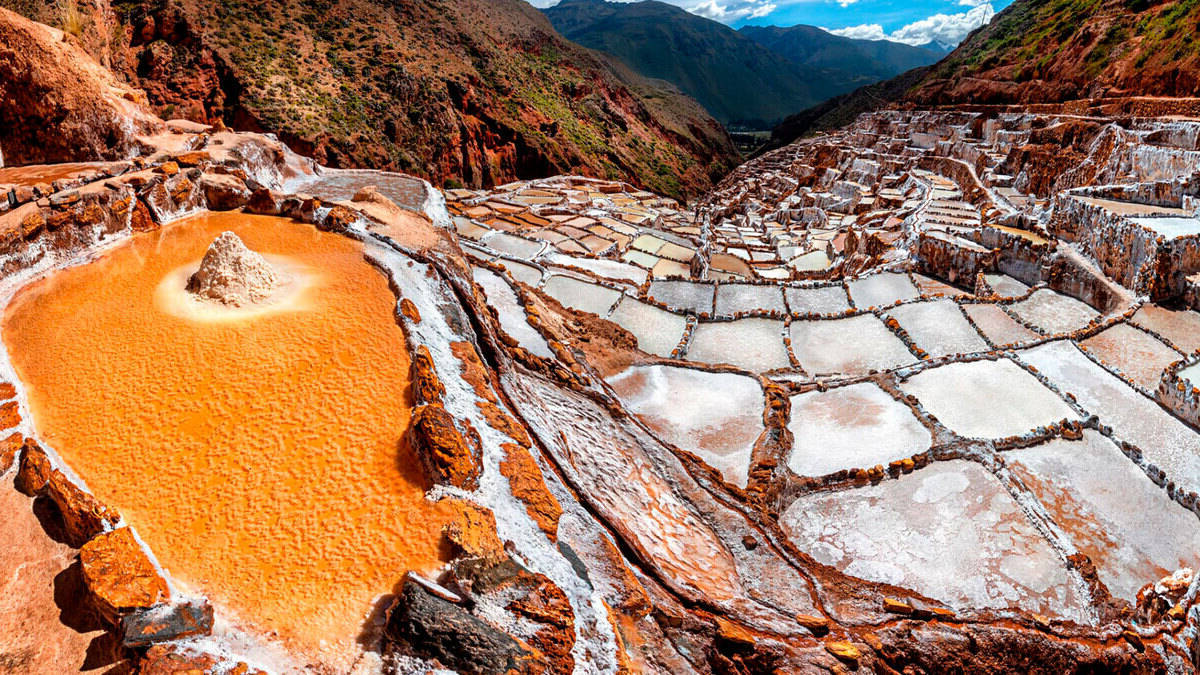Secrets Of The Salt Works: Hidden Historic Sites

Have you ever wondered about the hidden stories behind historic sites? One such place, often overlooked, is the salt works. These sites, where salt was once produced, hold a treasure trove of history. From ancient techniques to the lives of workers, each location offers a unique glimpse into the past. Imagine walking through old buildings, seeing the tools used, and learning how salt shaped economies and cultures. Whether you're a history buff or just curious, visiting a salt works can be a fascinating experience. Ready to uncover the secrets of these historic sites? Let's dive in!
Secrets of the Salt Works: Hidden Historic Sites
Salt has been a vital resource for centuries, shaping economies, cultures, and even wars. Hidden within the folds of history are remarkable salt works that tell tales of human ingenuity and perseverance. Let's uncover some of these fascinating sites.
Ancient Salt Mines
Salt mining dates back thousands of years. These ancient mines offer a glimpse into early human civilization and their methods of extracting this precious mineral.
Hallstatt Salt Mine, Austria
- One of the oldest salt mines in the world, Hallstatt has been in operation since the Bronze Age. Visitors can explore tunnels and see ancient tools used by miners.
Wieliczka Salt Mine, Poland
- This UNESCO World Heritage site features intricate carvings, chapels, and even an underground lake. The mine has been operational since the 13th century.
Salt Pans and Flats
Salt pans and flats are natural formations where salt is harvested from evaporated seawater. These sites are not only historically significant but also visually stunning.
Salar de Uyuni, Bolivia
- The world's largest salt flat, Salar de Uyuni, stretches over 10,000 square kilometers. It creates a mirror-like reflection during the rainy season, making it a photographer's paradise.
Maras Salt Pans, Peru
- These terraced salt pans have been used since Inca times. The salt is harvested by hand, preserving traditional methods passed down through generations.
Historic Salt Routes
Salt routes were essential for trade, connecting distant regions and fostering cultural exchanges. These routes often traversed challenging terrains, showcasing the determination of ancient traders.
Via Salaria, Italy
- One of the oldest Roman roads, Via Salaria, was used to transport salt from the Adriatic Sea to Rome. The route played a crucial role in the city's development.
Salt Road, Germany
- This medieval trade route connected the salt mines of Lüneburg with the port of Lübeck. It was vital for the Hanseatic League's prosperity.
Salt Works and Factories
Industrial salt works and factories revolutionized salt production, making it more efficient and accessible. These sites highlight the evolution of salt extraction techniques.
Saline Royale d'Arc-et-Senans, France
- Designed by architect Claude-Nicolas Ledoux in the 18th century, this salt factory is a masterpiece of industrial architecture. It is now a UNESCO World Heritage site.
Salt Works of Salins-les-Bains, France
- These historic salt works have been in operation since the Middle Ages. The site includes a museum that showcases the history of salt production in the region.
Salt in Modern Times
Even today, salt continues to play a crucial role in various industries. Modern salt works incorporate advanced technology while preserving traditional methods.
Salt Ponds of San Francisco Bay, USA
- These colorful salt ponds are a striking sight from above. They produce salt for various uses, including food, water treatment, and industrial applications.
Salt Fields of Kampot, Cambodia
- Known for producing high-quality sea salt, Kampot's salt fields are a testament to the region's rich history and dedication to traditional salt harvesting techniques.
Discovering the Salt Works
Exploring the hidden historic sites of the salt works reveals a rich tapestry of history and culture. These places offer a glimpse into the past, showing how salt production shaped communities and economies. Walking through these sites, you can almost hear the echoes of workers and see the remnants of their labor.
Visiting these locations isn't just about learning history; it's about experiencing it. The stories, the structures, and the landscapes all come together to create a unique adventure. Whether you're a history buff or just curious, these salt works sites provide a fascinating journey through time.
So next time you're planning a trip, consider adding a visit to one of these historic salt works. You'll leave with a deeper appreciation for the past and some great memories.

